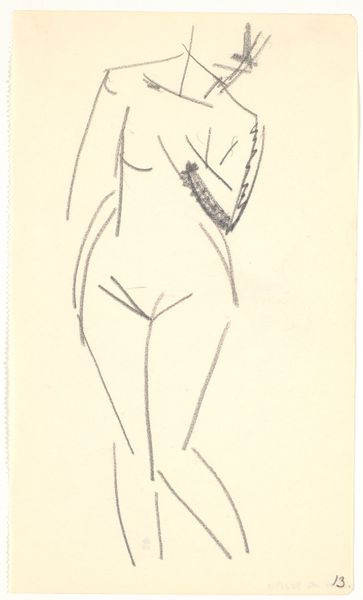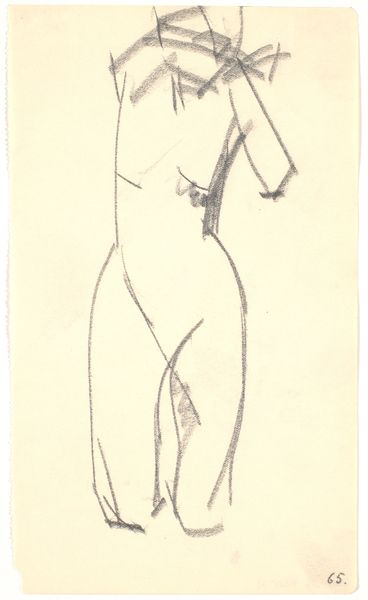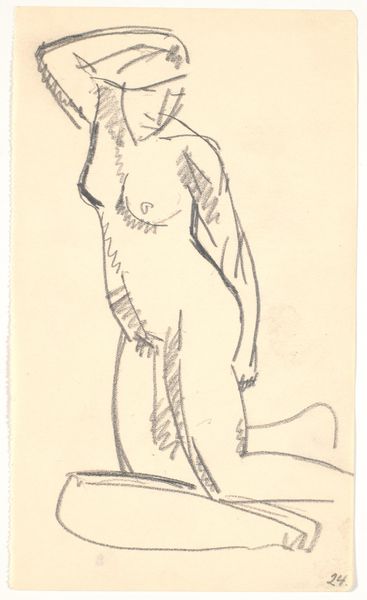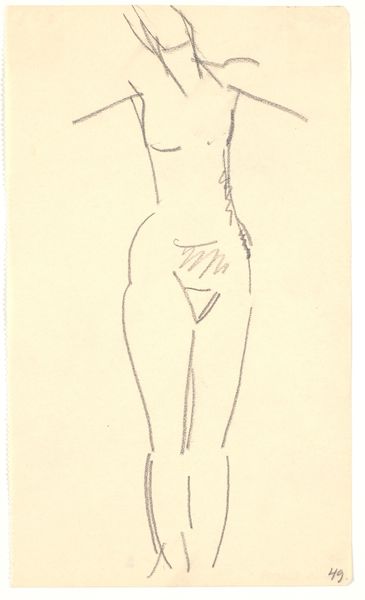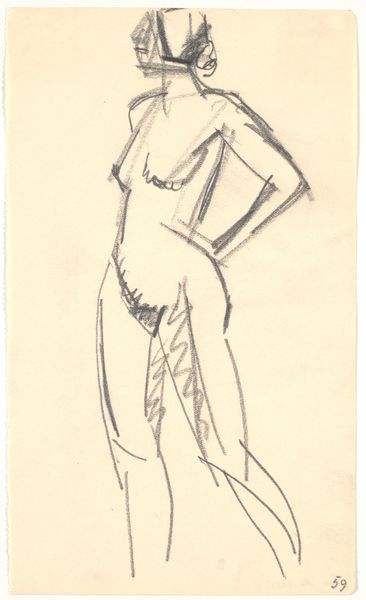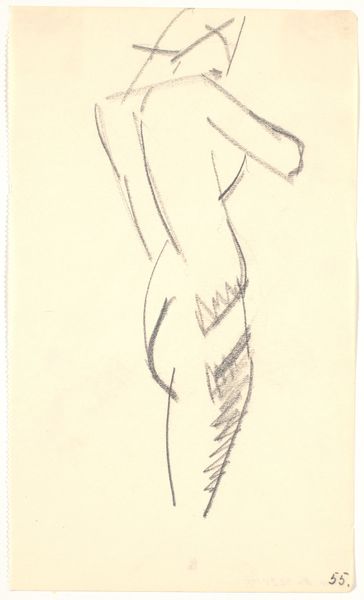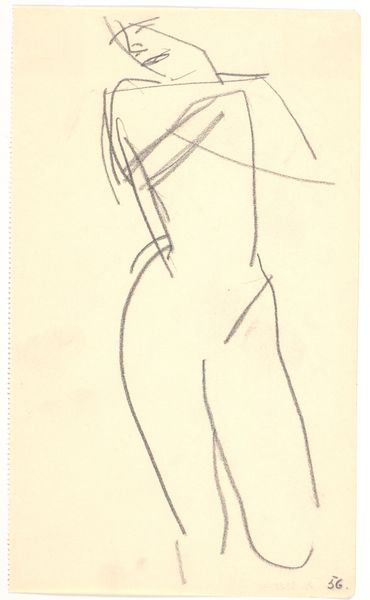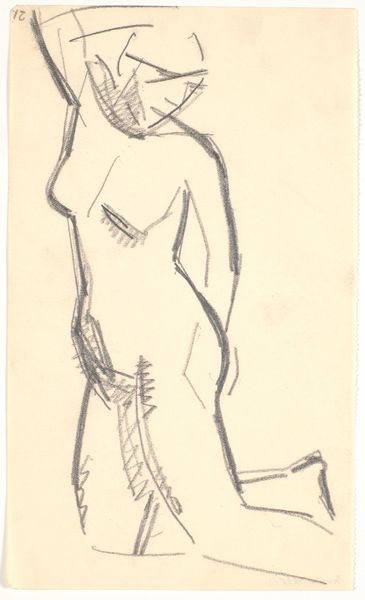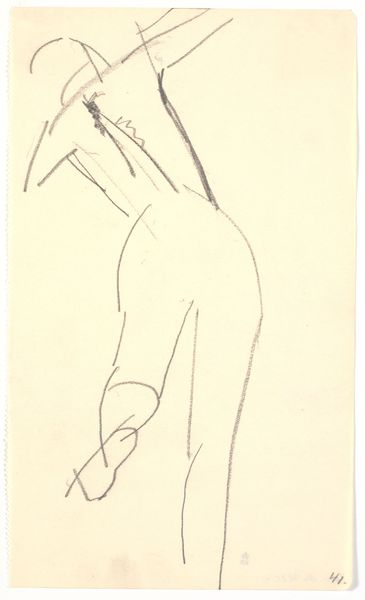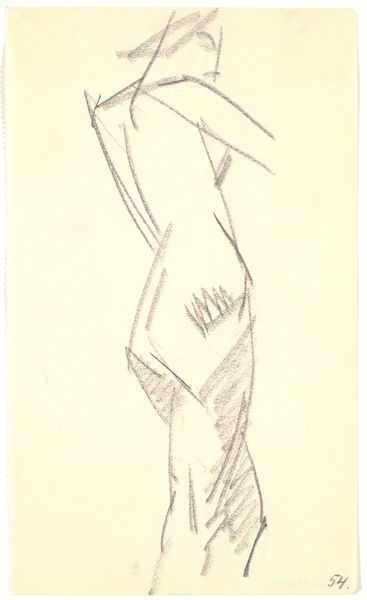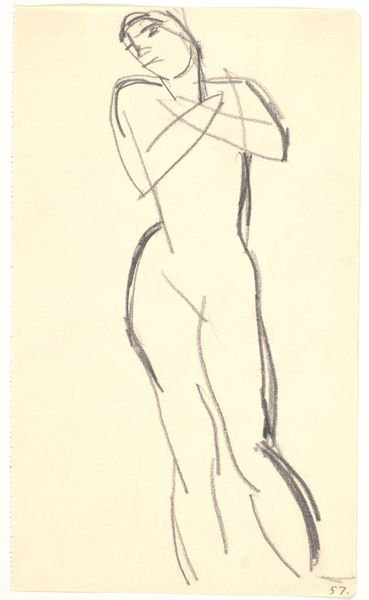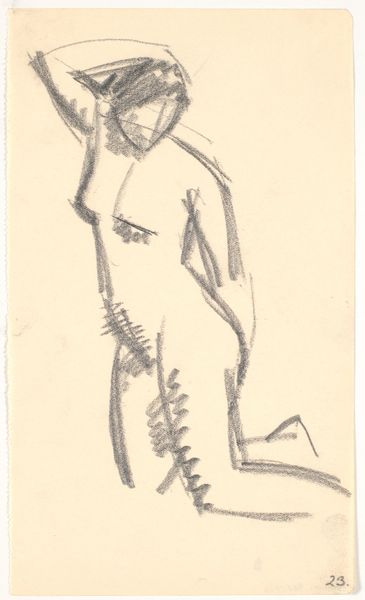
drawing, pencil, graphite
#
portrait
#
drawing
#
figuration
#
pencil
#
graphite
#
nude
Dimensions: 209 mm (height) x 124 mm (width) (bladmaal)
Editor: We are looking at "Standing Model" by Karl Isakson, made with graphite and pencil around 1914 or 1915. It has such raw energy, almost like a quick sketch capturing a fleeting moment. How would you interpret this piece from a historical perspective? Curator: It’s intriguing how Isakson employs such minimalist lines. During this pre-war period, nude studies, while academically rooted, often became sites for exploring anxieties around the body and shifting societal norms. Consider the burgeoning expressionist movements. Do you see any hints of that unease here? Editor: Maybe in the slightly distorted proportions and the obscured face? It doesn’t present a traditionally idealized form. Curator: Precisely! It moves away from classicism, and invites questions about how the female form was viewed and represented. Was this piece intended for public display or private study, and how might that impact our understanding? Editor: That’s a great point. If it were a study, the artist might feel freer to experiment and challenge conventions. What do you find most compelling about the socio-political implications of this piece? Curator: For me, it's the work’s ability to be of its time, echoing the move away from strictly academic or realist representation while still subtly subverting the public gaze typical of nudes from the time. This kind of drawing asks us what social anxieties artists were reckoning with, even on paper. Editor: It's amazing how a seemingly simple drawing can reflect so much about its cultural moment. Thanks for shedding light on that. Curator: My pleasure. Thinking about art in relation to broader social currents always makes it so much richer.
Comments
No comments
Be the first to comment and join the conversation on the ultimate creative platform.
